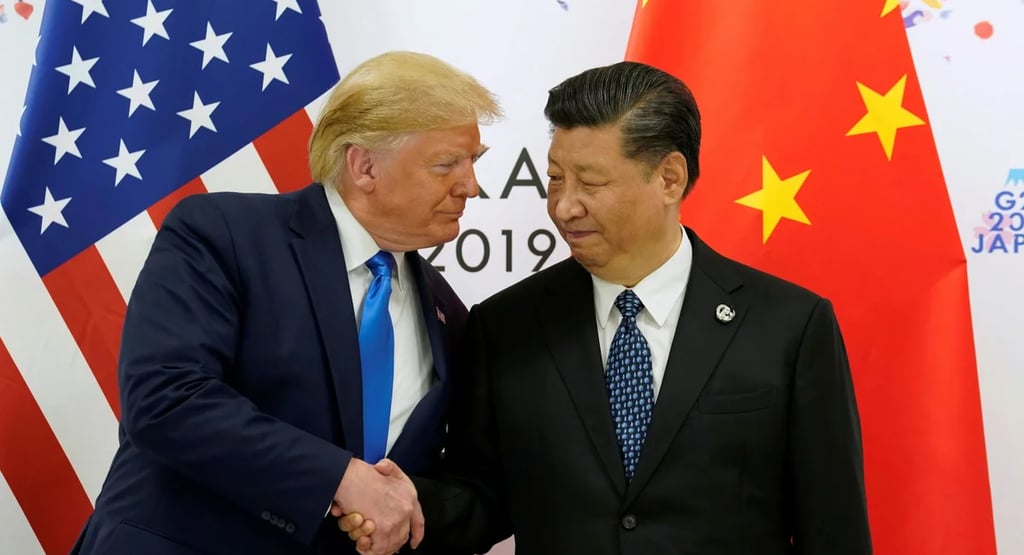China Signals Openness to Tariff Talks as U.S. Considers Trade De-escalation
With tensions from the trade war persisting, China has indicated it may be open to negotiations—if the U.S. shows sincerity and rolls back unilateral tariffs. Behind the scenes, both countries appear to be preparing for a thaw in trade relations.
BUSINESS
Yahoo Finance
5/2/20252 min read


China has announced it is evaluating recent outreach from U.S. officials regarding potential tariff negotiations, sparking optimism that formal trade talks could soon be revived. In a statement Friday, China's Commerce Ministry struck a cautious but conciliatory tone, suggesting that while it won’t back down from confrontation, it is willing to re-engage in dialogue.
“If we fight, we will fight to the end; if we talk, the door is open,” the ministry stated. “The tariff war and trade war were unilaterally initiated by the United States. If the United States wants to talk, it should show its sincerity and be prepared to correct its wrong practices and cancel the unilateral tariffs.”
This message marks a subtle shift in China’s posture, one that indicates Beijing is laying the groundwork for talks—but not without saving face. Notably, Chinese authorities have reportedly expanded a list of U.S. goods exempt from its sweeping 125% retaliatory tariffs, including ethane, certain semiconductor products, and pharmaceuticals. These quiet exemptions provide targeted relief to U.S. sectors while maintaining a hardline public stance.
Trump’s Mixed Signals on Tariffs
Meanwhile, President Donald Trump continues to defend the U.S.’s steep 145% tariffs on Chinese goods, insisting China “deserves it” and suggesting the costs will be absorbed by Beijing. But these public comments contrast sharply with internal administration efforts to pursue phased tariff reductions and signal a willingness to talk.
This week, Trump signed an order providing tariff exemptions for U.S. automakers, clarifying that companies already paying import duties on vehicles won't face double tariffs on raw materials like steel. The decision followed heavy lobbying from the auto industry, which warned that added costs would drive up consumer prices and damage U.S. sales.
The rollback on auto tariffs was presented as part of a broader strategy to maintain domestic competitiveness while applying pressure abroad. Additionally, the U.S. eased duties on foreign-made parts, a move intended to soften the economic strain on American manufacturers and car dealers.
Global Trade Outlook
Beyond China, U.S. officials are trying to project progress on the global stage. Commerce Secretary Howard Lutnick claimed this week that the U.S. is “on the doorstep” of a trade agreement with one unnamed nation. Meanwhile, U.S. trade adviser Kathryn Bessent said the U.S. is “very close” to finalizing a bilateral trade pact with India.
These diplomatic moves come as the trade war’s ripple effects continue to impact global markets. Countries dependent on exports, like Germany and Japan, have raised concerns that prolonged uncertainty could dent worldwide demand and choke recovery.
Conclusion: Talks on the Horizon?
While no formal negotiations between the U.S. and China have been announced, the signs of thaw are there. Both sides are engaging in quiet policy shifts that reduce the pressure without undermining their negotiating positions.
China’s move to waive some tariffs discreetly, combined with Trump’s willingness to ease auto-related duties, suggest that both nations may be preparing for a face-saving off-ramp from the multi-year economic standoff.
Yet for talks to succeed, the challenge remains: can both sides bridge their political narratives with mutual economic pragmatism? For now, the ball appears to be in Washington’s court.
Photo: Kevin lamarque / Reuters
© 2025. Ke Press Global. A Ke Harbor Company. All rights reserved.
FOLLOW KE PRESS GLOBAL ON :
Contact us


